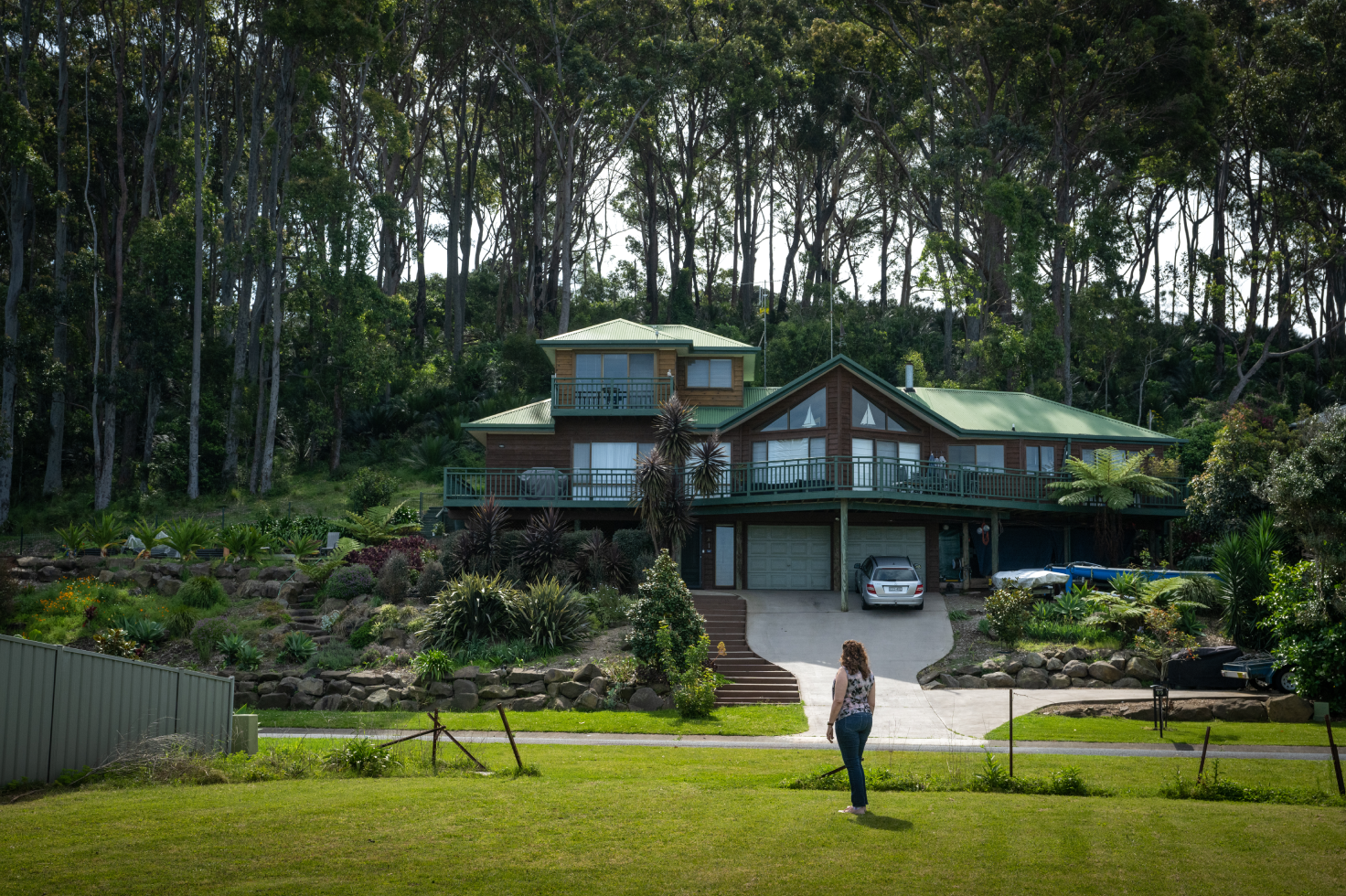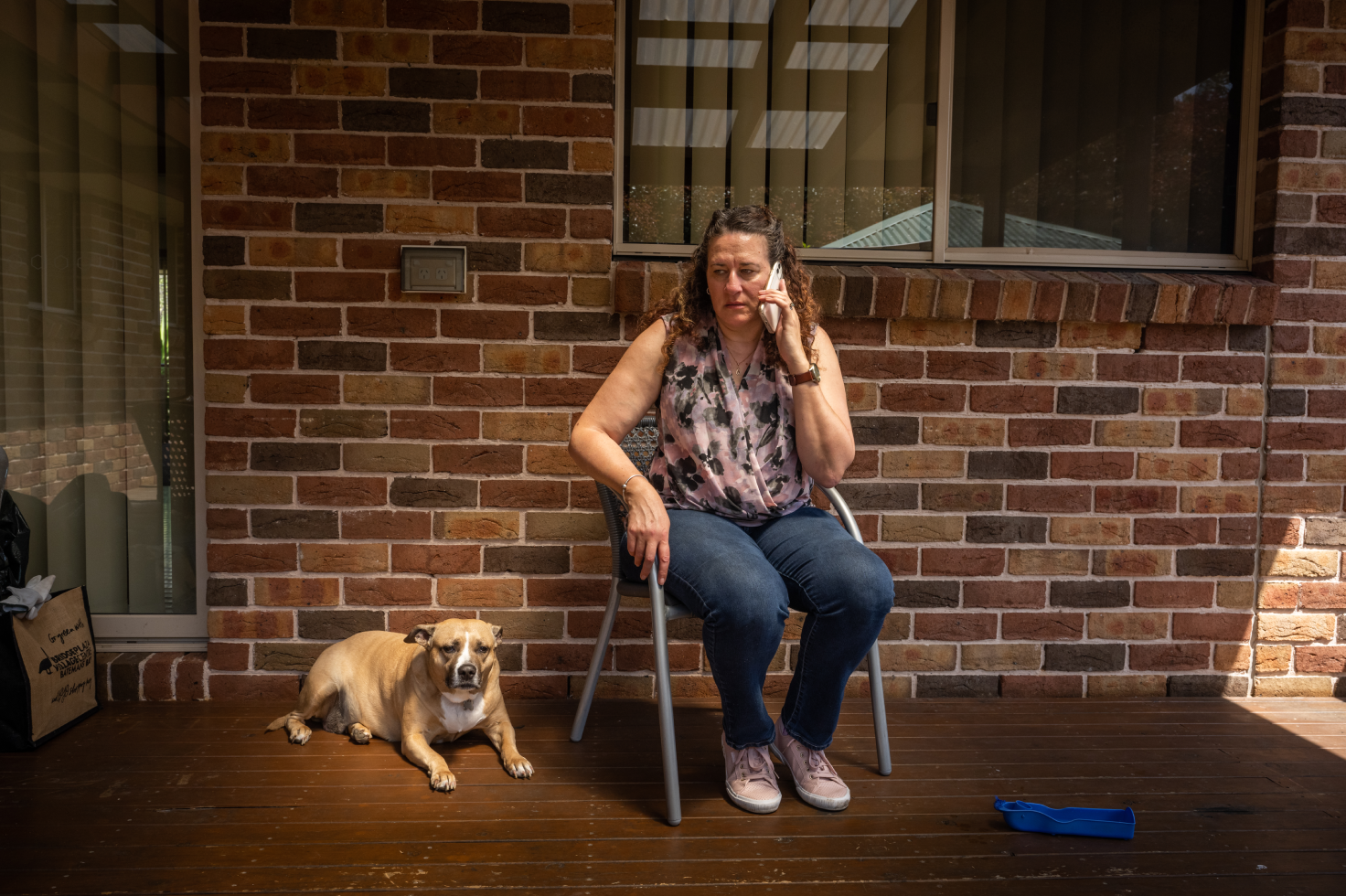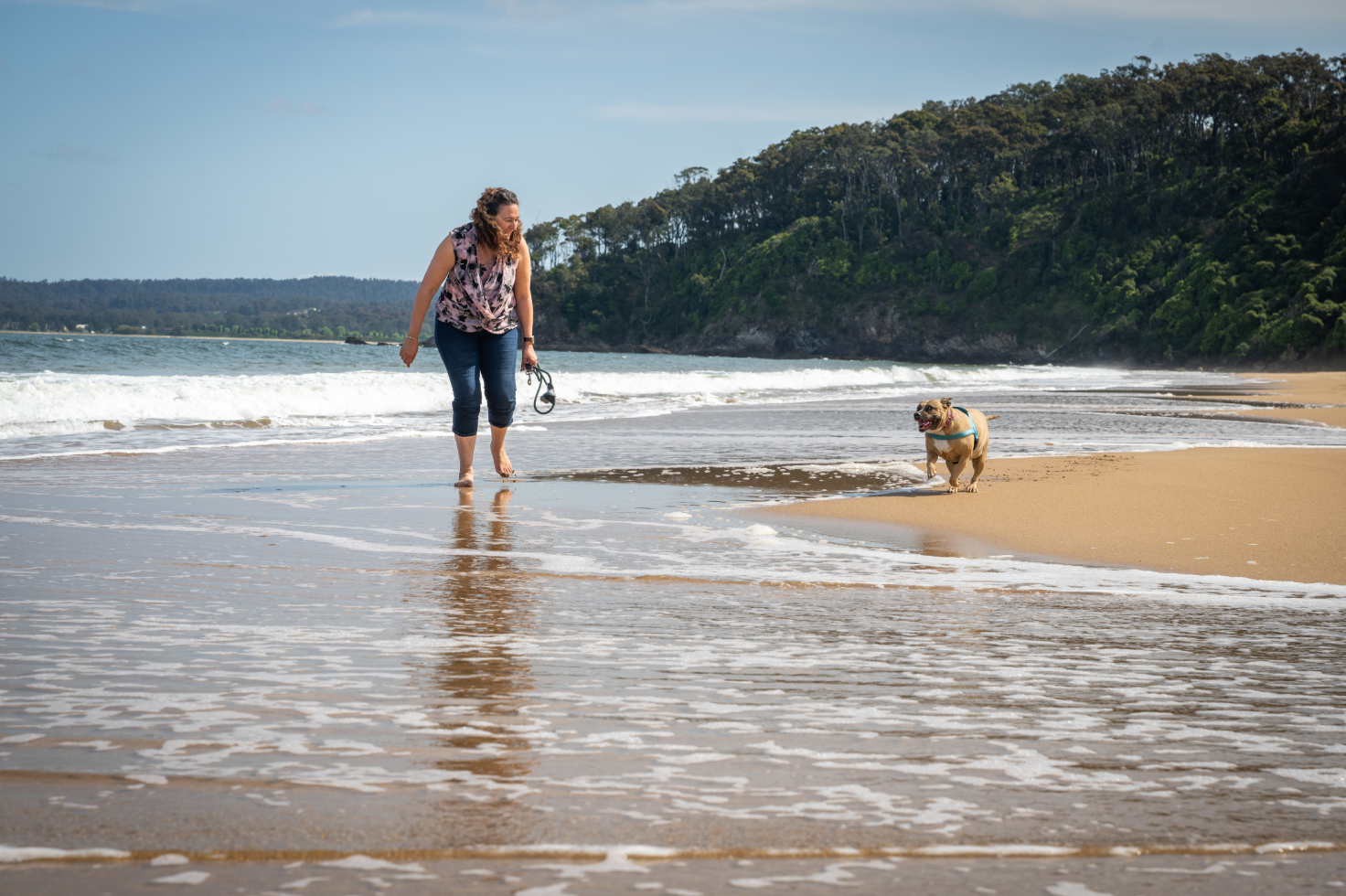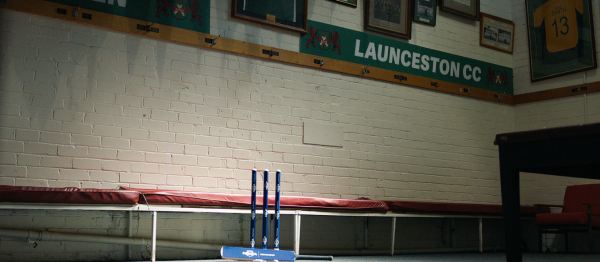11 November 2022
From needing help to giving help
Caught in the Black Summer bushfires on Yuin country, the South Coast of NSW, Nadine De Santis vowed if she survived she would help her community. She couldn’t have imagined how huge her promise would become.

Q: Your Moment of Help began on New Year’s Eve 2019 when bushfires were heading towards your property in Mogo, on the South Coast of NSW. How did that unfold?
My husband, an ex-RFS firefighter, a neighbour and I stayed behind to fight the fires. Our dog Lyrics stayed, too. We’d been told that the fire breaks had been done and that we were safe and that there was no need to evacuate. Then at 6am the next morning, the evacuation call came through, which left us with little time to plan. By nine o'clock the fires were on us.
After that is all a bit of a blur. I recall filling up all the bins around the property with water. We blocked the gutters and filled them with water and we were ready to take out spot fires.
There were things coming down from the sky everywhere and igniting the grass. It just took off. It was extremely hot, to the point that I couldn't stay outside anymore because I was fainting.
I went inside the house with the dog and we had walkie talkies, which was lucky because obviously comms went down. It became so dark that the solar lights came on, as if it was night.
“I made a deal with God, and said, ‘If you get us out of here, I’ll do something to make it right’.”
Q: What was going through your mind?
I made a deal with God, and said, ‘If you get us out of here, I’ll do something to make it right.’ My in-laws’ property next door was burning down, and we could hear windows blowing out and gas bottles exploding all over Mogo. You felt like you were in a war zone.
The evacuation meeting spot was the Malua Bay Club, but it was engulfed by fire as well. Everyone there had to leave and go to the beach. It goes to show you that even with plans in place, you need options. You can’t rely on one evacuation route – you need to have multiple options, because roads from A to B may not be accessible. You need to have backups, and you want to be doing that preparation when you’re relaxed, not when you’re in a frenzy.

“There were things coming down from the sky everywhere and igniting the grass that was already so dry that it just took off.”
Q: What happened next?
By that evening, everyone whose homes were standing was back home, but we had no power, no outside communication. That brought us all together. My husband is an experienced electrical contractor, and he went through and got generators up and running within 48 hours.
We set up a system of community fridges and people who had large generators could run more than one fridge. We were one of the community fridges and my routine every morning was to go around giving people milk and bread.
The local shops and cafe handed out all their bread and milk. Community members were going around checking on people – it was a group effort. I just wanted to do something, I didn’t want to be idle.

"We’re looking to get volunteers engaged where they need to be, and in the timeframe that suits them.”
Q: It was around that time that you realised you could do so much more to formally help. When did you join the Australian Resilience Corps?
I had been working with the Minderoo Foundation from back when they were first organising temporary housing and in 2021 I joined the Australian Resilience Corps and today I am the Project Lead. We need to move away from supporting people in recovery and to instead change the way we prepare for fire and flood. The Australian Resilience Corps is it – if I want to make change, this is where I need to be.
We live in a country that has for centuries had fire and flood issues, yet we haven’t learned to prepare for that. I’m a perfect example of that. I was naive and oblivious to the risk, because daily life gets in the way.
We need to change the culture so that people start thinking about fire and flood, and make it part of the everyday. How you prepare will decide how you bounce forward.
The act of preparing gives you some kind of control.
The act of preparing gives you some kind of control.
You talk about having a responsibility to help yourself in order to help others.
When we work together within the community, it starts to add to resilience and that preparedness factor, and we start to see better capacity for communities to be able to withstand a disaster. We see the community come together and people start to know who’s who, and break down some of the barriers that fences between properties sometimes bring.

“When we work together within the community, it starts to add to resilience and preparedness.”
The Power of help is within us all. Communities are stronger together. Join the Australian Resilience Corps as we create the country’s largest army of helpers.



